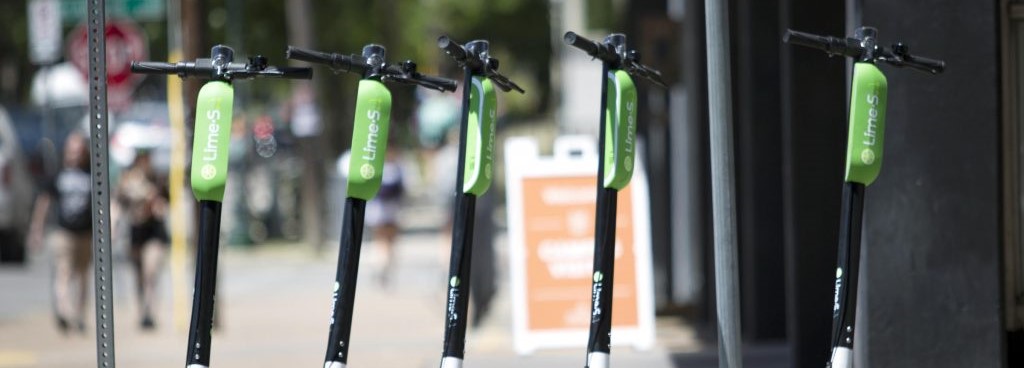Blog Post
Insight: Birds, Limes, and the Last-Mile Problem
By: Thomas Holst
Note: The opinions expressed are those of the author alone and do not reflect an institutional position of the Gardner Institute. We hope the opinions shared contribute to the marketplace of ideas and help people as they formulate their own INFORMED DECISIONS™.
Salt Lake City has always embraced innovative transportation planning. The city’s founders created a 130-foot-wide State Street, double the width of streets in Manhattan and San Francisco. More than a century later, FrontRunner, TRAX, the S-Line, and buses had pre-pandemic annual ridership of 44 million. FrontRunner will receive $350 million to add a second track in many locations, increasing speed, frequency, and reliability of service.
However, many United States cities are ambivalent toward a new transportation mode—the shared electric scooter. In 2018, Bird and Lime bypassed Salt Lake City municipal regulators and dropped fleets of rentable electric scooters onto the streets, hoping to attract customers as quickly as possible.
E-scooters met mixed public reactions. On the one hand, e-scooters created animosity among people who encountered scooters left in the middle of downtown Salt Lake City sidewalks, and pedestrians who shared narrow sidewalks with scooter riders.
On the other hand, transportation experts hail e-scooters as a solution to the “last-mile problem,” when a trip between a public transport station and home or work is a little farther than walking distance. Scooters also allow people to get around the city for meetings or lunch. The micromobility transportation sector, comprising bikes and e-scooters, becomes relevant because one-third of all car trips in the U.S. are less than 2 miles.
Whether you are for or against e-scooters, it is difficult to deny their popularity. In 2019, people took 86 million scooter trips nationally, over a 100% increase from 2018. Just to compare, bike-share trips in 2019 were about 50 million, and bike sharing has been around much longer than e-scooters.[i] Do cities want micromobility devices as part of their transportation fabric? If yes, there may be growing pains.
In an attempt to address such growing pains, the Salt Lake City Council passed an ordinance in December 2020 focused on e-scooter safety and barred riders from leaving e-scooters in areas impeding pedestrians and automobile traffic. The upcoming 2021 summer season will be the litmus test for e-scooter compliance.
How have major metropolitan areas responded to micromobility? When I lived in Manhattan, I biked only on weekend mornings when streets were empty of automobile traffic. Today, Manhattan has 240 miles of bike lanes for commuters cycling to work. In short, Manhattan provides safe space for micromobility devices to operate. This is an effective compliance strategy. Give people a safe place to ride and they will not be on the sidewalk. Give people legitimate places to park a scooter or bike and there will be fewer parking violations.
With passage of December’s e-scooter ordinance, Salt Lake City is taking a step towards incorporating micromobility into its urban transportation fabric. However, the city needs to continue building safe, comfortable infrastructure for micromobility users, if micromobility is going to be a viable solution to the last-mile problem.
Thomas Holst is the senior energy analyst at the Kem C. Gardner Policy Institute.
[i] National Association of City Transportation Officials. Shared Micromobility in the U.S.: 2019.

